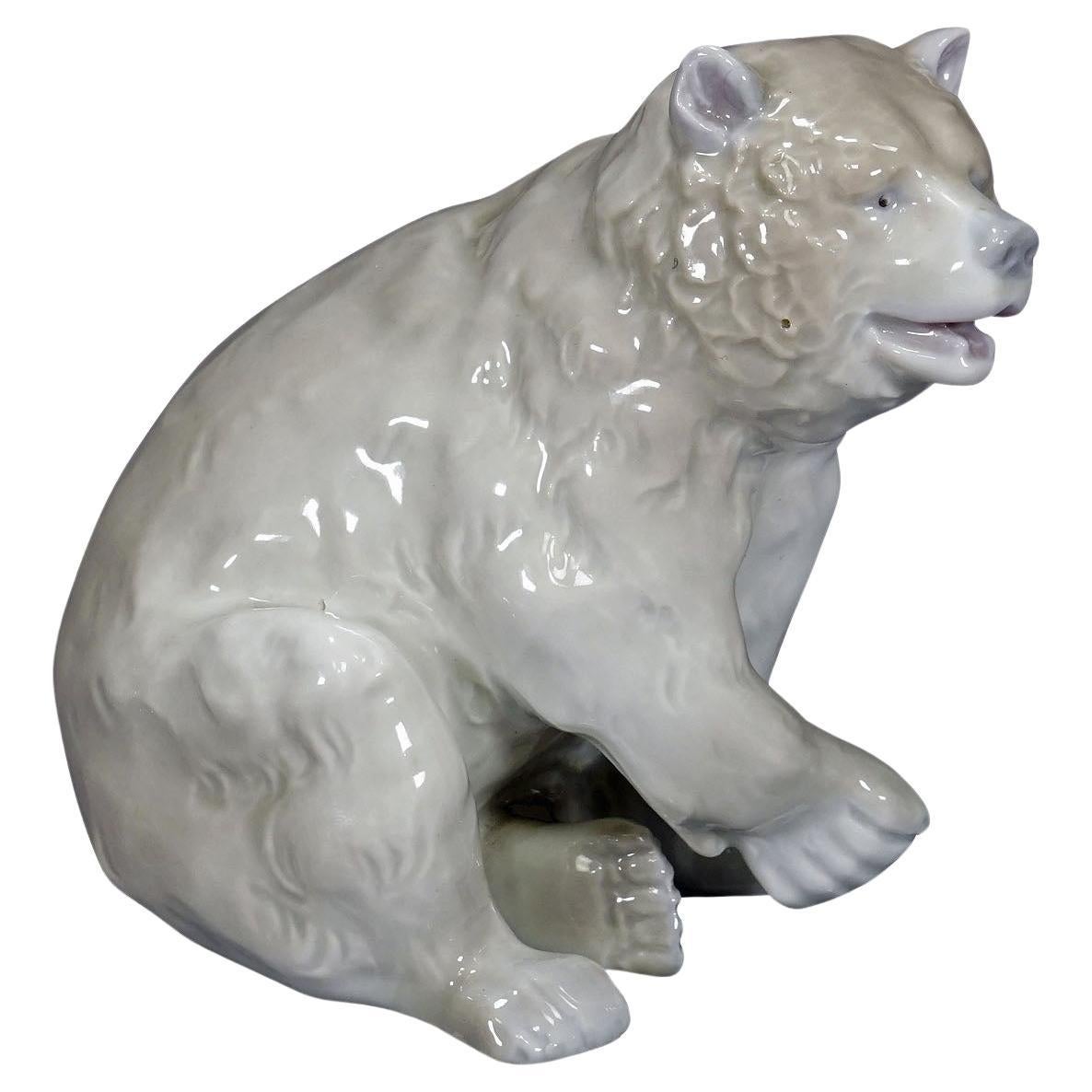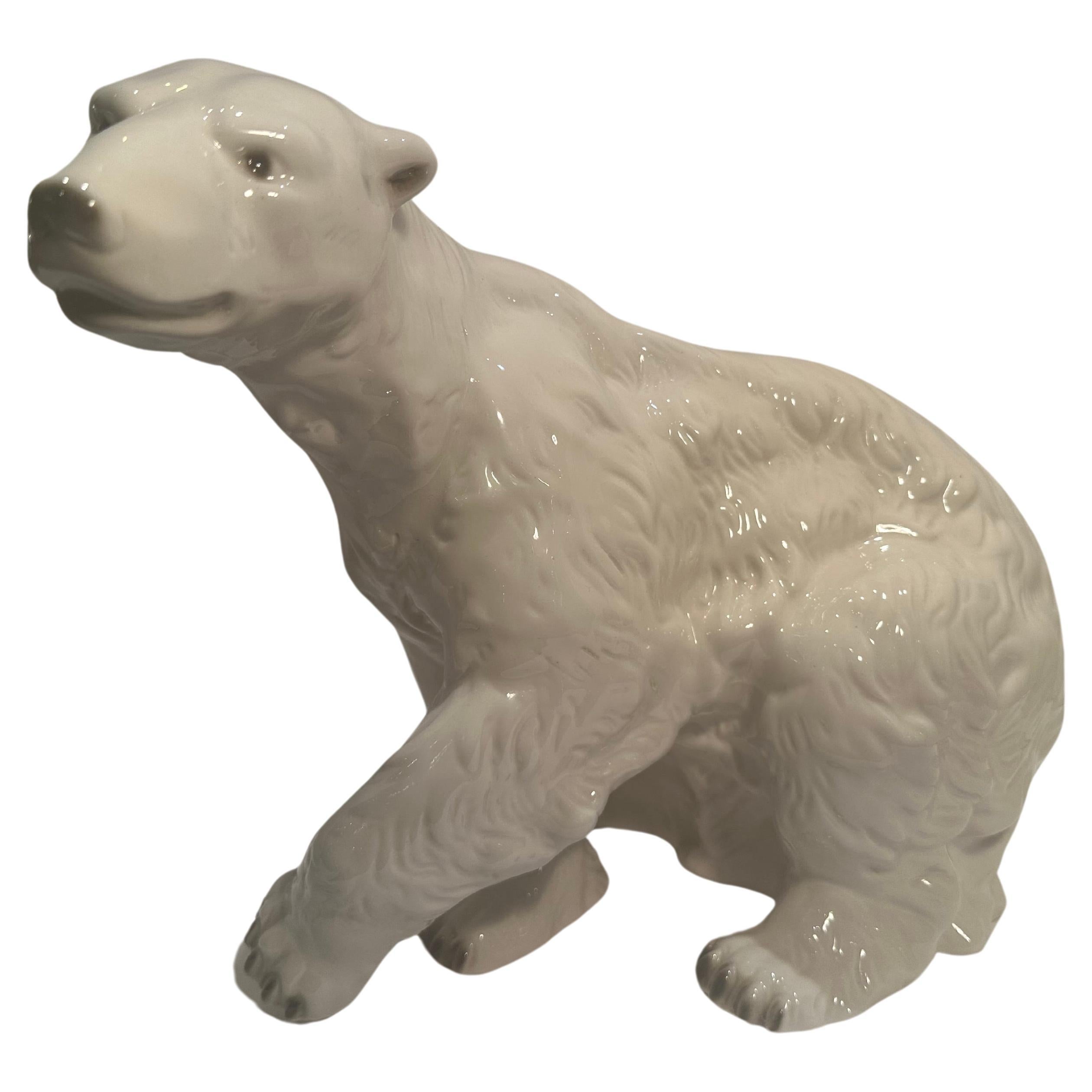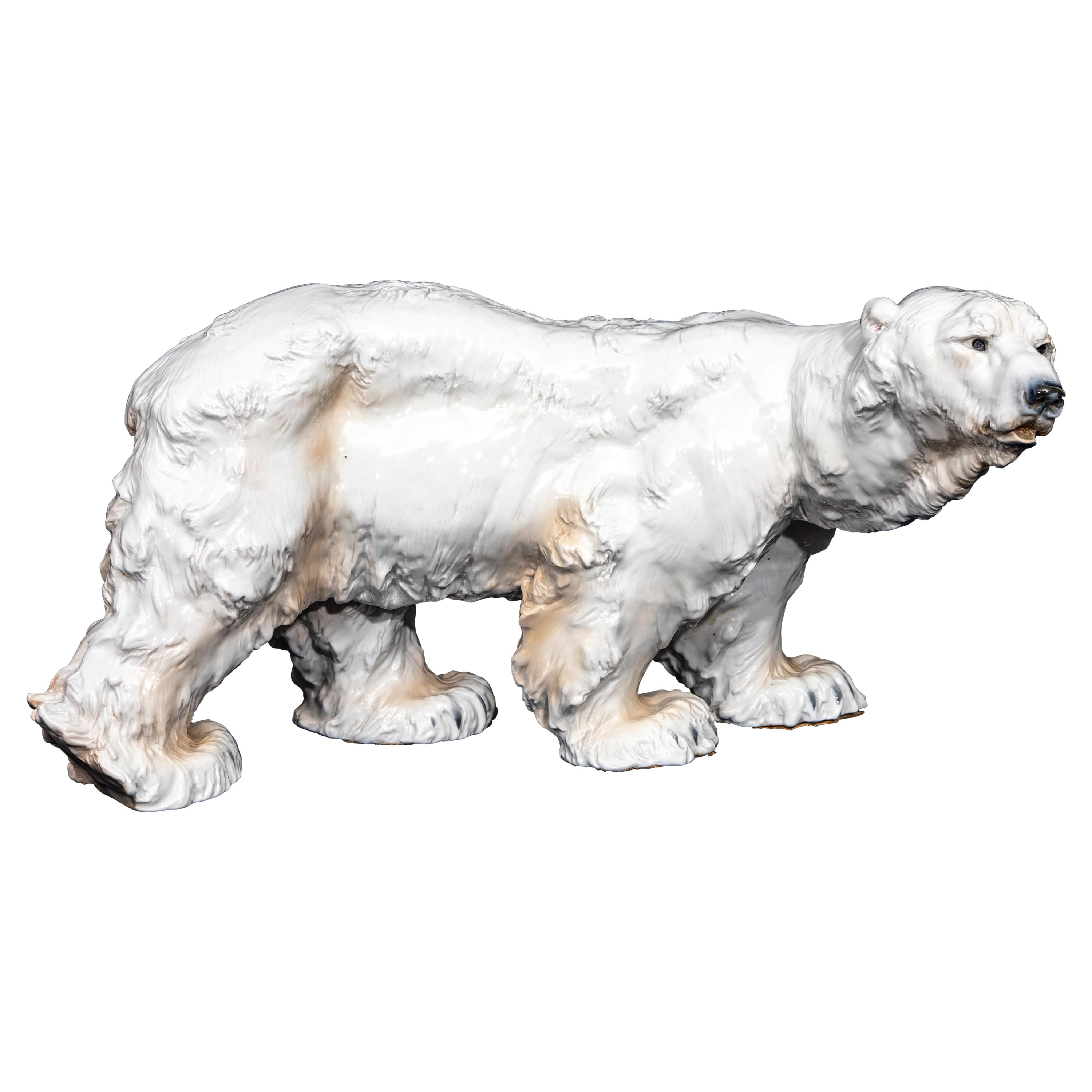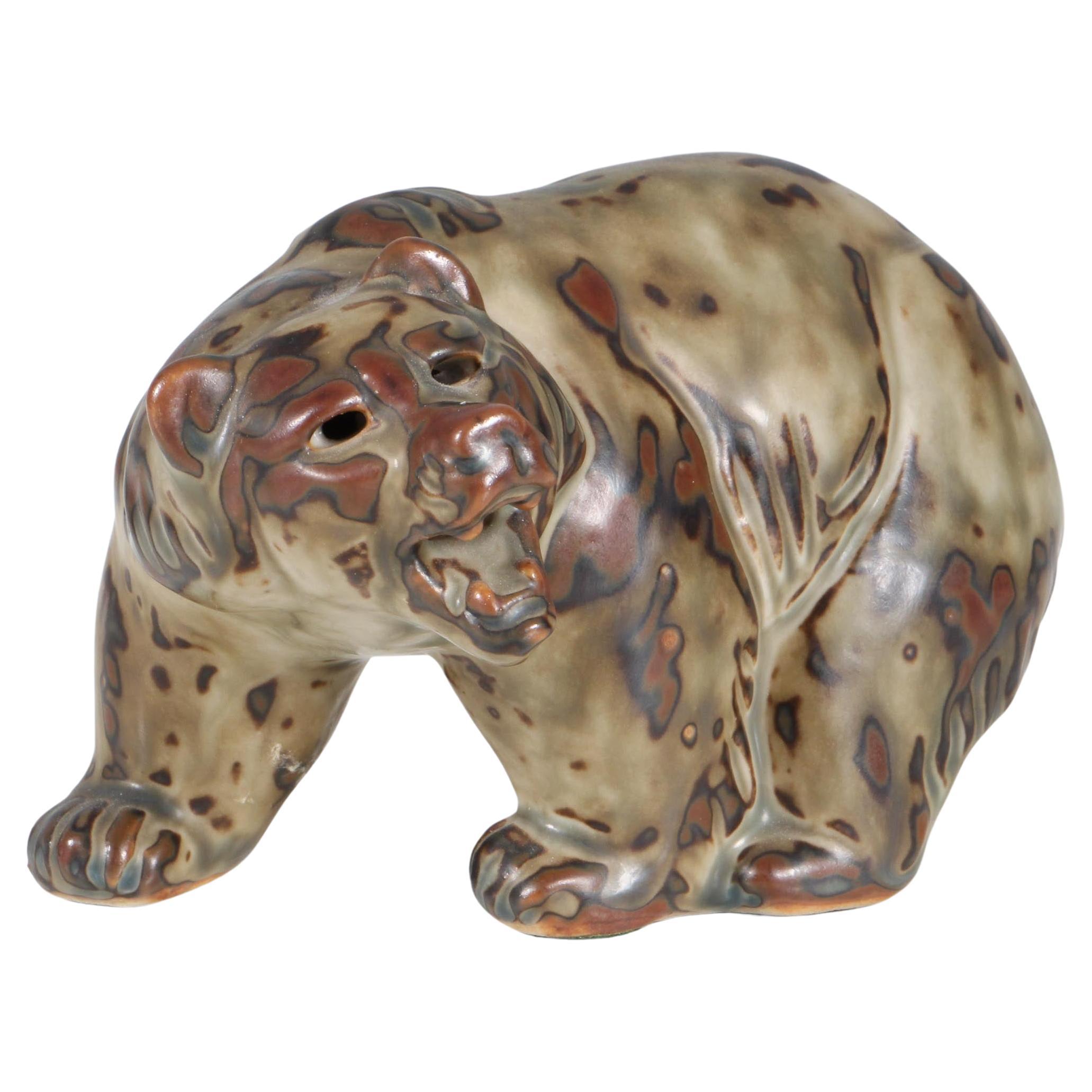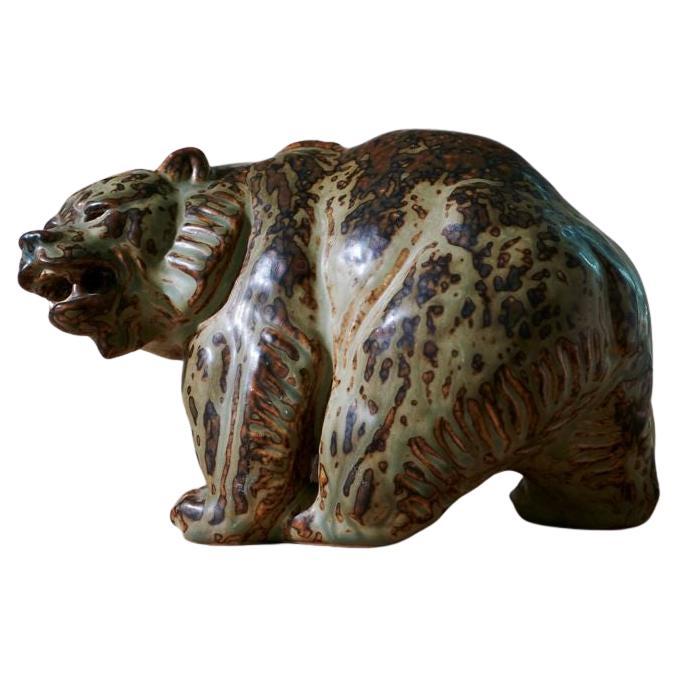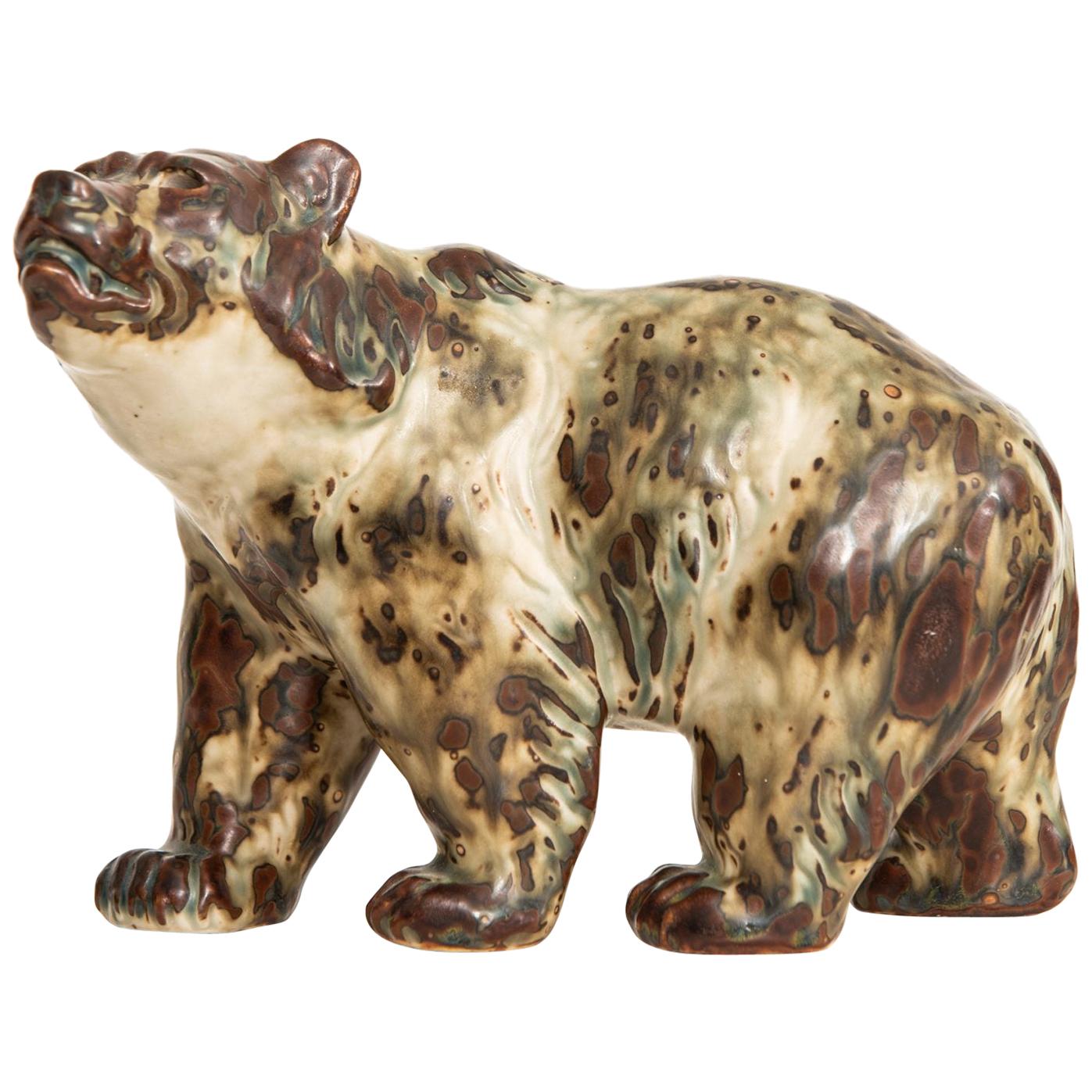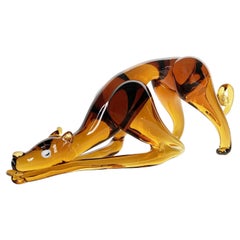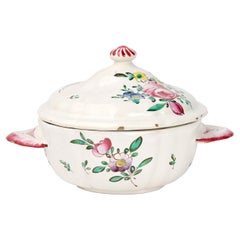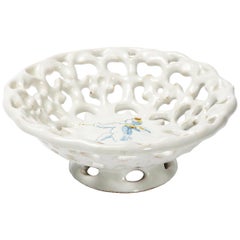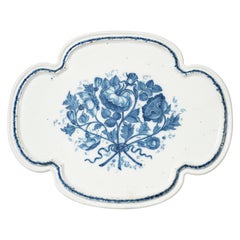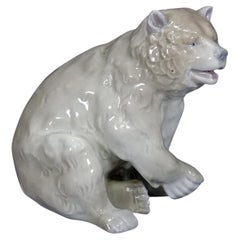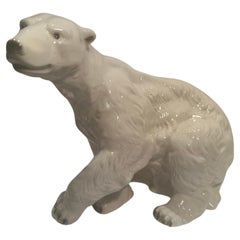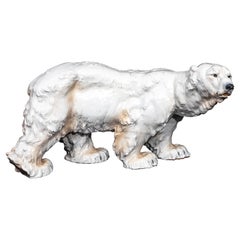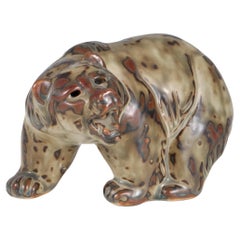Items Similar to Meissen Porcelain Bear, Johann Gottlieb Kirchner, Johan Joachim Kaendler, 1735
Video Loading
Want more images or videos?
Request additional images or videos from the seller
1 of 22
Meissen Porcelain Bear, Johann Gottlieb Kirchner, Johan Joachim Kaendler, 1735
$5,964.56
£4,409.67
€5,000
CA$8,204.16
A$9,119.43
CHF 4,780.21
MX$111,370.32
NOK 59,678.17
SEK 56,146.02
DKK 38,064.92
About the Item
Hard porcelain bear modeled and painted in gray-brown and black
Manufacture of Meissen, by Johann Gottlieb Kirchner and Johan Joachim Kaendler, 1735
It measures 2.79 in x 3.81 in x 2.48 in (7.1 cm x 9.7 x 6.3 cm)
Weight: 0.465 lb (211 g)
State of conservation: a glued paw.
Meissen porcelain has dominated the European market ever since it was first produced. The German manufacturer was the first to produce porcelain in Europe and had a stable production as early as the second decade of the XVIII century. A great enthusiast, Prince Augustus the Strong of Saxony, in fact, invested a lot of capital and energy in producing the precious material. Under the very same Augustus, some of the greatest sculptors and artists of the late Baroque period were called upon to participate in the enterprise: among these Johann Gottlieb Kirchner (1706–1768) and Johan Joachim Kaendler (1706–1775), who were particularly renowned for both delightful animal figures and an imaginative and very wide production of figures and characters.
This small hard porcelain sculpture shows a seated bear with its head lowered toward its legs. The animal has a docile attitude and looks up at the viewer from below. The small form is made with the style and technique characteristic of Johann Gottlieb Kirchner, and is an exact miniature replica of the well-known large sculpture from 1732 (now in the Animal Gallery of the Staatliche Kunstsammlungen in Dresden). Indeed, it shares all the features of the large sculpture. Precisely for this model, Otto Walcha hypothesizes a collaboration between the two artists: Kirchner would have forged the bear, and Kaendler would have provided the finishing touches on the fur, as the former was unable to work due to an illness. (Otto Walcha, Meissen Porzellan, Dresda, 1973, p. 468, n. 29). This bear matches Kaendler's models: its fur is highlighted by minute incisions and then painted with thin brush strokes which meet on the muzzle. These strokes then fall neatly down the back, starting from the vertebrae.
However, in the archive documents, it is recorded that both Modellmeisters (master modelers) created large-sized bear models for Augustus the Strong's Japanese Palace.
From the archives, it is also documented that multiple copies of the large-sized bear model, both in achrome and polychrome versions, were produced for the Japanese Palace. On the other hand, there were only three colored specimens of the small-sized bear model produced in 1735, each measuring 7 centimeters like ours. (S. Wittwer, The gallery of Meissen animals: Augustus the Strong's menagerie for the Japanese palace in Dresden, Monaco 2006, p. 303). Only a few pieces had the crossed swords mark under the paw, and it is also absent in our specimen.
Bibliography:
O. Walcha, Meissen Porzellan, Dresda, 1973, p. 468, n. 29;
S. Wittwer, The gallery of Meissen animals: Augustus the Strong's menagerie for the Japanese palace in Dresden, Monaco 2006;
U. Pietsch, Meissen Porzellanplastik von Gottlieb Kirchner und Johan Johachim Kaendler, Monaco 2006, pp. 148-149 n. 218.
- Attributed to:J.J. Kaendler (Maker)
- Dimensions:Height: 2.8 in (7.1 cm)Width: 3.59 in (9.1 cm)Depth: 2.49 in (6.3 cm)
- Style:Baroque (Of the Period)
- Materials and Techniques:
- Place of Origin:
- Period:1730-1739
- Date of Manufacture:Circa 1735
- Condition:Repaired: A glued paw. It is an old restoration. A glued paw.
- Seller Location:Milano, IT
- Reference Number:1stDibs: LU4352215537901
About the Seller
4.3
Vetted Professional Seller
Every seller passes strict standards for authenticity and reliability
Established in 1860
1stDibs seller since 2018
21 sales on 1stDibs
Associations
International Confederation of Art and Antique Dealers' Associations
- ShippingRetrieving quote...Shipping from: Milano, Italy
- Return Policy
Authenticity Guarantee
In the unlikely event there’s an issue with an item’s authenticity, contact us within 1 year for a full refund. DetailsMoney-Back Guarantee
If your item is not as described, is damaged in transit, or does not arrive, contact us within 7 days for a full refund. Details24-Hour Cancellation
You have a 24-hour grace period in which to reconsider your purchase, with no questions asked.Vetted Professional Sellers
Our world-class sellers must adhere to strict standards for service and quality, maintaining the integrity of our listings.Price-Match Guarantee
If you find that a seller listed the same item for a lower price elsewhere, we’ll match it.Trusted Global Delivery
Our best-in-class carrier network provides specialized shipping options worldwide, including custom delivery.More From This Seller
View AllGreyhound - Shaped Glass Sculpture, Flavio Poli, I.V.A.M. Murano, Circa 1930
By Flavio Poli
Located in Milano, IT
Greyhound - shaped glass sculpture
Flavio Poli
I.V.A.M. Murano, circa 1930
It measures 4.72 in in height x 12.59 x 3.74 (12 cm x 32 x 9.5)
It weighs 2.42 lb (1.1 kg)
State of conse...
Category
21st Century and Contemporary Italian Modern Animal Sculptures
Materials
Murano Glass
Italian Maiolica Cup Ferretti Lodi, circa 1770 - 1780
By Antonio Ferretti
Located in Milano, IT
Maiolica puerperal cup
Antonio Ferretti Manufacture
Lodi, Circa 1770 - 1780
Maiolica polychrome decorated “a piccolo fuoco” (third fire).
It measures: 4.3 x 6.8 x 5.3 in (11 x 17,5 x 13,5 cm)
Weight: 0.78 lb (358 g)
State of conservation: some closed pass-through fêlures on the cup, barely visible on the outside. Some use chips on the edge of the lid, two of which are more marked.
From about the mid-sixteenth century, the puerperal soup tureen or puerperal cup became one of the most popular wedding gifts in central Italy. As an auspicious symbol, it replaced the birth table (“desco da parto”) which, on the occasion of high-ranking marriages, from the thirteenth century, had been painted by famous artists, especially in Tuscany.
In France this same tureen is called "écuelle de mariée", as it is given to spouses as a sign of fertility.
During the eighteenth century this custom spread even outside Italy to all social levels. Depending on availability and rank, it was made of different materials: precious metals, maiolica, porcelain, glass, pewter, etc.
Beginning in the mid-twentieth century, the custom of this symbolic homage gradually disappeared, although famous designers such as Gio Ponti and Giuseppe Gariboldi, even as recently as the 1940s, revisited a model of a small puerperal soup bowl for the Ginori and, also in Italy in 1940, in a national competition for young potters, one of the themes of the test was indeed a modern model of a puerperal cup as an auspicious gift.
This particular cup was also called a "service cup" or "puerperal vase" or "stuffed cup" - the windows were sealed with straw to prevent drafts of air for women in labor.
In the eighteenth century the line of the puerpera cup was simplified, so much so that it took the form of a small tureen with two handles - the typical broth cup...
Category
Antique 1770s Italian Rococo Ceramics
Materials
Maiolica
Ancient Italian Renaissance Maiolica Crespina, Faenza, 1580 Circa
Located in Milano, IT
Crespina
Faenza, last quarter of the 16th century
Maiolica painted in two colors, light blue and yellow, on a thick, rich layer of white enamel.
It measures 2.24 in (5.7 cm) in height, 6.10 in (15.5 cm) in diameter.
lb 0.55 (kg 0.25)
State of conservation: mimetic restoration.
The small cup has a raised central “umbone”, a perforated brim and a shaped rim. It rests on a high jutting foot. The "crespina" shape, in some inventories is cited as "tacce de frute" (fruit cups). It was particularly appreciated in the Renaissance and has variants based on the formal types and the different sizes. The decoration, made according to the dictates of the “compendiario” style, used few standardized colors: blue and yellow on a thick white and shiny enamel, deliberately chosen as the colour which was most reminiscent of silver. This choice derived from a trend in creative design of the era: the shapes used in the molds were often taken from metal objects. An idea which would last throughout the Renaissance.
The work shows, in the middle of the “umbone”, a winged putto stepping forward while playing a long thin trumpet.
The depiction of the putto is fully representative of the repertoire of the Faenza workshops of the sixteenth century.
Some specimens with this type of decoration have been published in a volume by Carmen Ravanelli Guidotti: there appears the whole productive repertoire of this fundamental moment of transition between the taste for the “istoriato” style and the great simplification of decoration in the “compendiario” period. This style, in its simplicity, however, saw its expression in a rather varied collection of decorative subjects, including old-fashioned busts...
Category
Antique 16th Century Italian Renaissance Ceramics
Materials
Maiolica
18th Century Italian Maiolica Centerpiece Bassano Venice, circa 1750
Located in Milano, IT
Maiolica centerpiece
Pasquale Antonibon factory
Nove di Bassano, Venice, 1740-1770.
Measures: 1.85 in x 19.21 in x 15.27 in
4.7 cm X 48.8 cm X 38.8 cm.
lb 5.29 (kg 2.4)
State of conservation: thin passing fêlure with covered chipping and a glued foot
The Antonibon were an important family of Venetian...
Category
Antique 1750s Italian Baroque Ceramics
Materials
Maiolica
Italian Maiolica Pitcher, Ferretti Manufacture, Lodi Circa 1770 - 1780
By Antonio Ferretti
Located in Milano, IT
Maiolica pitcher
Antonio Ferretti Manufacture
Lodi, circa 1770-1780
Maiolica polychrome decorated “a piccolo fuoco” (third fire).
It measures 8.66 x 8.66 x 4.33 in (22 x 22 x 11 ...
Category
Antique 1770s Italian Rococo Ceramics
Materials
Maiolica
Maiolica Bottle Cooler Joseph Hannong, Strasbourg France, circa 1771
By Joseph Hannong
Located in Milano, IT
Bottle cooler
Manufacture Joseph Hannong
Strasbourg, France, circa 1771
Maiolica polychrome decorated “a piccolo fuoco” (third fire)
It measures 7.40 in in height x 9.64 in diam...
Category
Antique 1770s French Rococo Vases
Materials
Maiolica
You May Also Like
Vintage Porcelain Bear Statue, Germany, ca 1950s
Located in Berghuelen, DE
Vintage Porcelain Bear Statue, Germany, ca 1950s
Item e7269
An old porcelain bear statue, decorated with polychrome colors. Made in Germany ca. 1950s. Illegible maker's signature on ...
Category
Mid-20th Century German Victorian Figurative Sculptures
Materials
Porcelain
Large Royal Dux Hand Made and Painted Porcelain Polar Bear
By Royal Dux
Located in Tustin, CA
A Royal Dux large hand made and painted porcelain polar bear, 20th century, modeled seated with one paw raised, applied blue triangle mark. Hallmark on bottom indicates circa 1918-19...
Category
Early 20th Century Czech Other Animal Sculptures
Materials
Porcelain
Large Art Deco Meissen Porcelain Sculpture of a Polar Bear by Otto Jarl
By Meissen Porcelain
Located in New York, NY
A beautiful and very large Art Deco Meissen Porcelain sculpture of a polar bear by Otto Jarl, beautifully sculpted, hand engraved and hand-painted under the glaze. Jarl, Otto (1856-1...
Category
Vintage 1910s German Other Animal Sculptures
Materials
Porcelain
Glazed Stoneware Bear Figurine, Knud Kyhn for Royal Copenhagen #20179
By Royal Copenhagen, Knud Kyhn
Located in Esbjerg, DK
Bear glazed stoneware Roayal Copenhagen statue by Knud Kyhn.
Ceramic statue produced by Royal Copenhagen of Denmark in perfect condition.
Produced 1950s. Knud Kyhn 1880-1969 was a ...
Category
Vintage 1950s Danish Scandinavian Modern Ceramics
Materials
Ceramic
$429 Sale Price
20% Off
Bear Figurine in Ceramic by Knud Kyhn
By Knud Kyhn, Royal Copenhagen
Located in Berlin, BE
Bear figurine in ceramic by Knud Kyhn
Ceramic figurine from Royal Copenhagen.
Additional information:
Material: Ceramic
Artist: Knud Kyhn
...
Category
Vintage 1950s Animal Sculptures
Materials
Ceramic
Knud Kyhn Ceramic Bear Nr 20155 Produced by Royal Copenhagen in Denmark
By Knud Kyhn
Located in Limhamn, Skåne län
Ceramic bear nr 20155 designed by Knud Kyhn. Produced by Royal Copenhagen in Denmark.
Category
Vintage 1950s Danish Scandinavian Modern Animal Sculptures
Materials
Ceramic
More Ways To Browse
Japan Hand Painted Porcelain
Antique Silver Brush
German Silver Bear
Bear Fur
Antique Porcelain Miniatures
Silver Animal Figures
Dresden Porcelain Marks
Dresden Antique Marks
Meissen Form
Porcelain Bears
Antique Japanese Porcelain Figures
Saxony Porcelain
Glass Menagerie
Meissen Bear
Johann Joachim Kaendler
Meissen Animal Figures
Meissen Porzellan
J J Kaendler Meissen Porcelain
